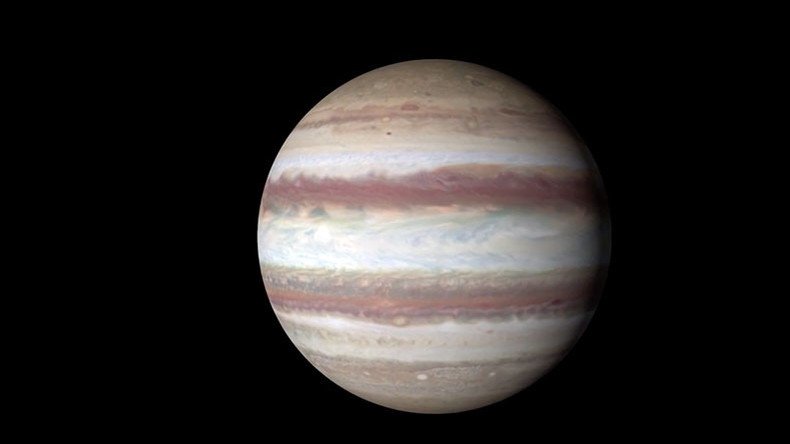Wave near equator: NASA's Hubble Telescope animation shows Jupiter in 4k Ultra HD (VIDEO)

New high definition images snapped by NASA's Hubble Telescope have captured Jupiter in a whole new light, revealing previously unknown details about the gas giant. Scientists used the pictures to create a 4K video of the planet's rotation.
The image maps, released by NASA's Goddard Spaceflight Center on Tuesday, show a “rare wave” just north of the planet's equator and a unique “filament-like” feature in the core of the Great Red Spot – a hurricane bigger than the size of three Earths, which has raged for hundreds of years on the planet.
The wave was first spotted by the Voyager 2 spacecraft during its flyby in 1979, but had not been seen since. Meanwhile, the “filament-like” feature had never been seen before.
The photos also provide evidence that the Great Red Spot is shrinking and becoming more circular, as it has been doing for years. Its longest axis now appears 150 miles (240 kilometers) shorter than it was in 2014.
“The two maps represent nearly back-to-back rotations of the planet, making it possible to determine the speeds of Jupiter’s winds,” NASA wrote.
NASA plans to land on Jupiter’s moon Europa and look for life http://t.co/vERSNEetAGpic.twitter.com/oajtqu0e3L
— RT (@RT_com) September 9, 2015The images are “the first products to come from a program to study the solar system’s outer planets – Jupiter, Uranus, Neptune and, later, Saturn – each year using Hubble,” NASA wrote, adding that the annual studies will help scientists to understand how “giant worlds” change over time.
The observations are designed to capture a “broad range of features,” including winds, clouds, storms, and atmospheric chemistry.
The pictures of Jupiter were taken by Hubble's high performance Wide Field Camera 3, which is known for offering stunning views of things that are extremely far off in space, such as the 2012 'Extreme Deep Field' image, which shows some of the oldest galaxies every observed.
The maps were produced by scientists at NASA's Goddard Space Flight Center, the Jet Propulsion Laboratory, and the University of California at Berkeley.












